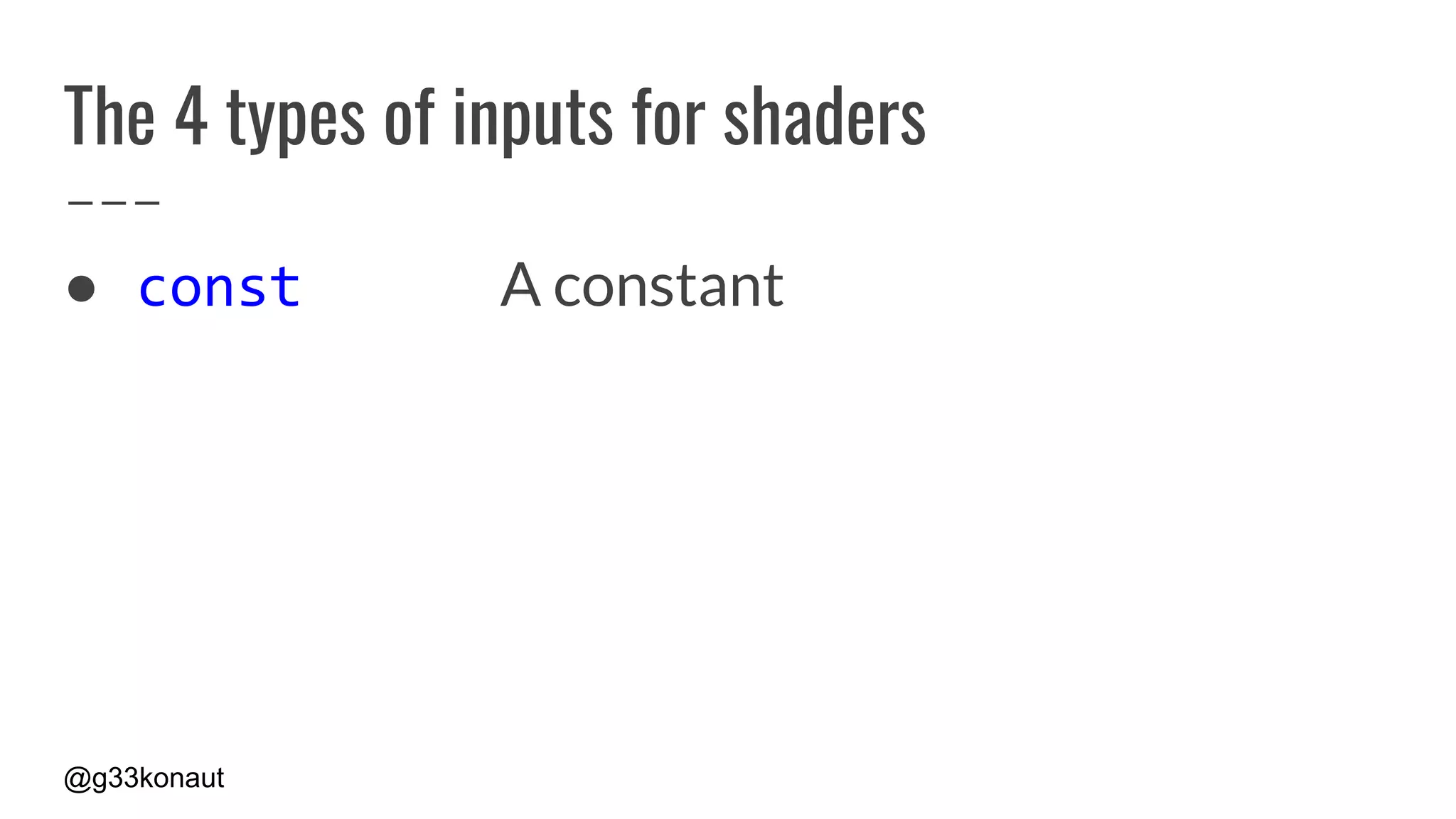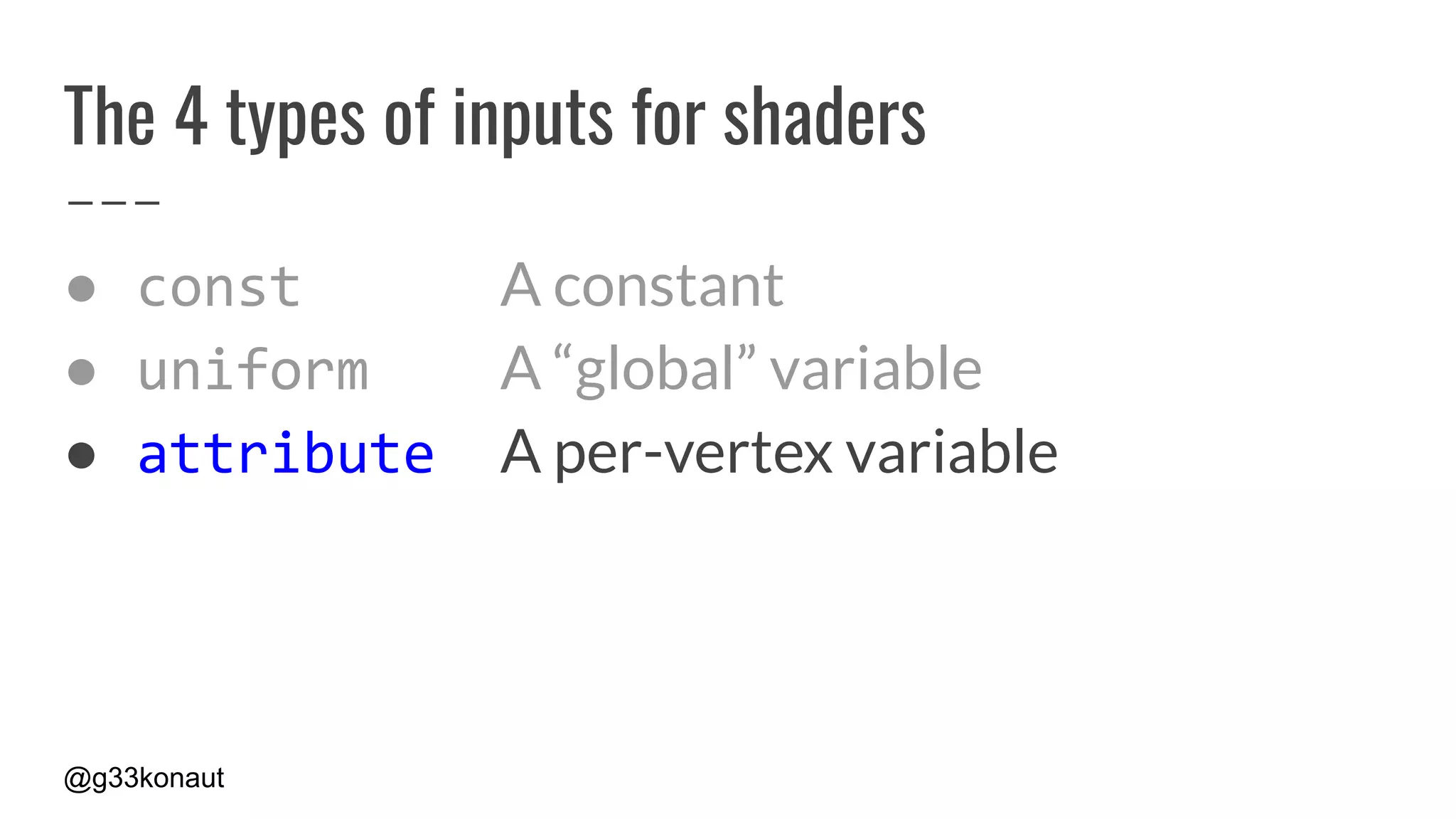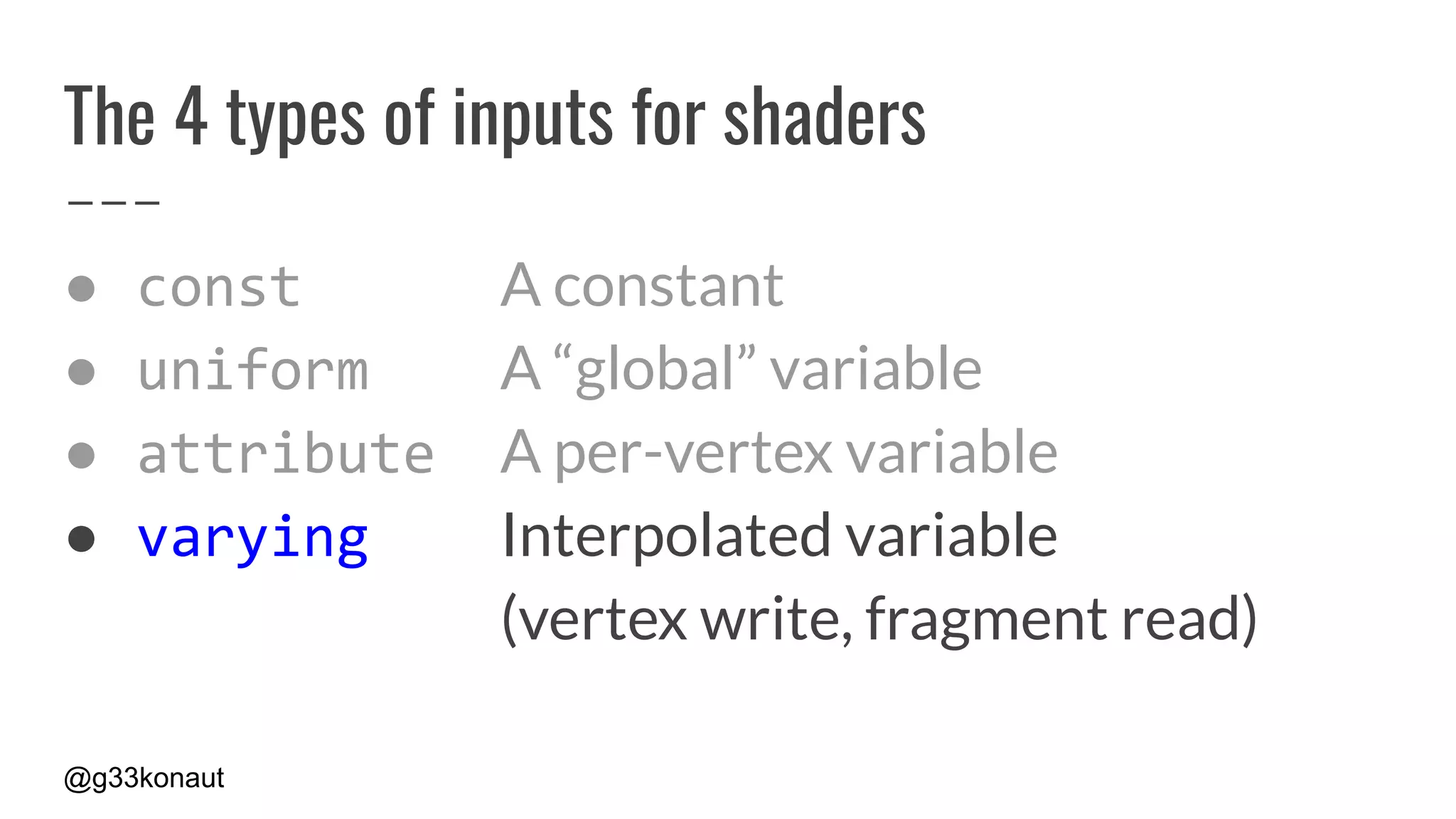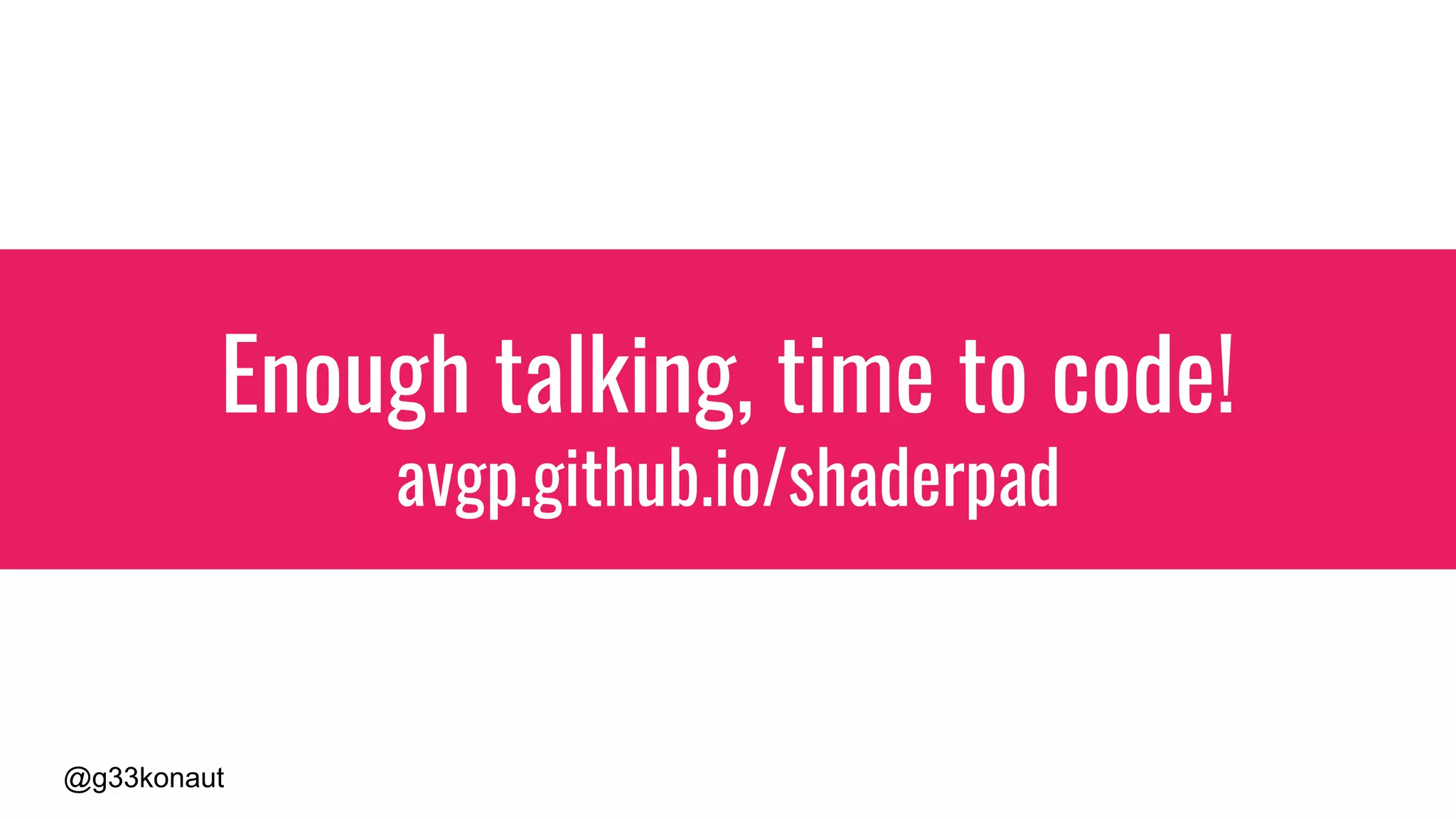The document is a transcript from a presentation on WebGL and shaders. It introduces WebGL and explains that it uses shaders written in GLSL to render 3D graphics in the browser. It discusses the core WebGL concepts of vertices, buffers to store vertex data on the GPU, and vertex and fragment shaders. It explains that vertices are processed by vertex shaders and fragments are processed by fragment shaders. The presenter then demonstrates how to write simple shaders and defines the different types of variables that can be used in shaders.


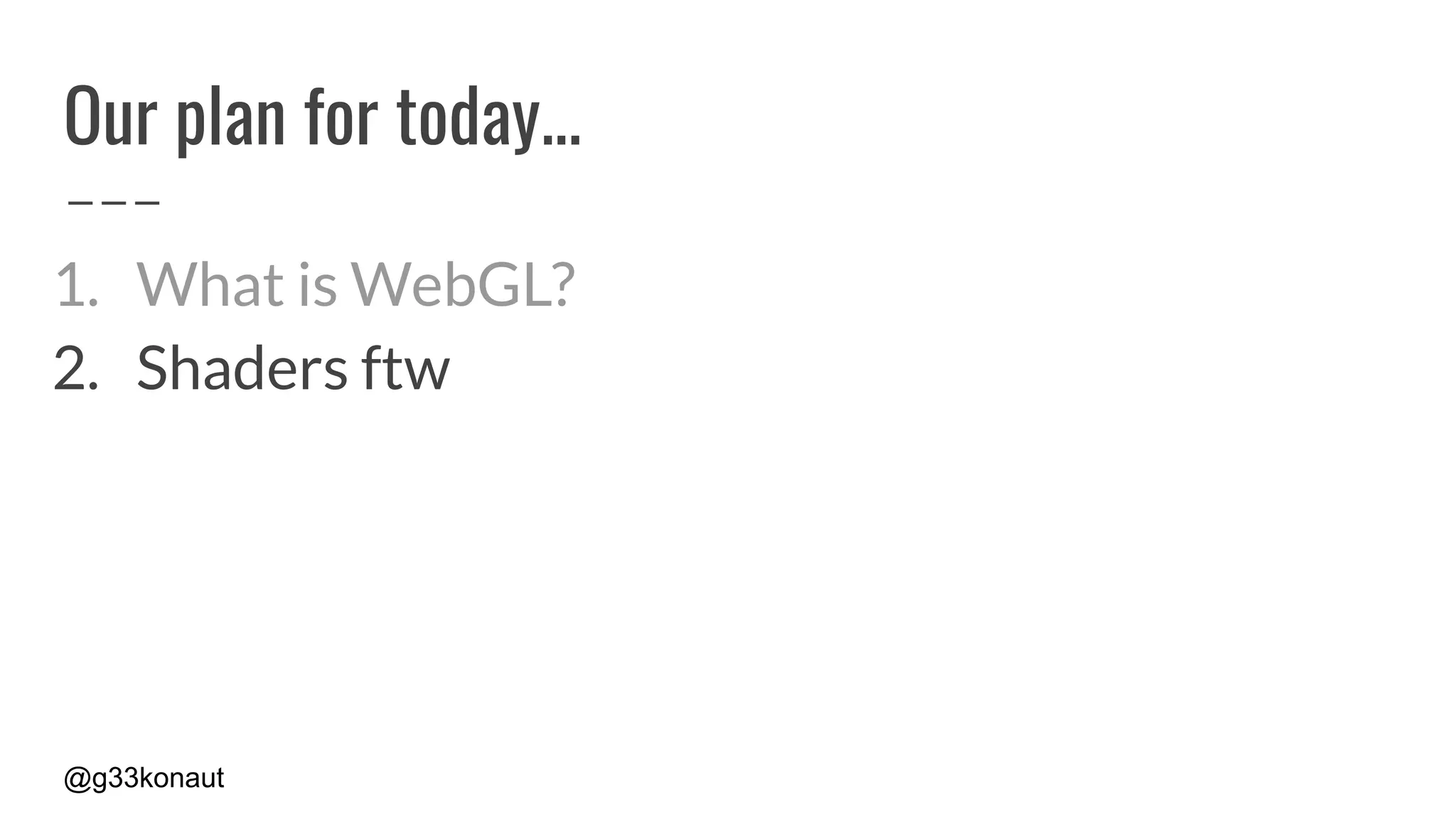

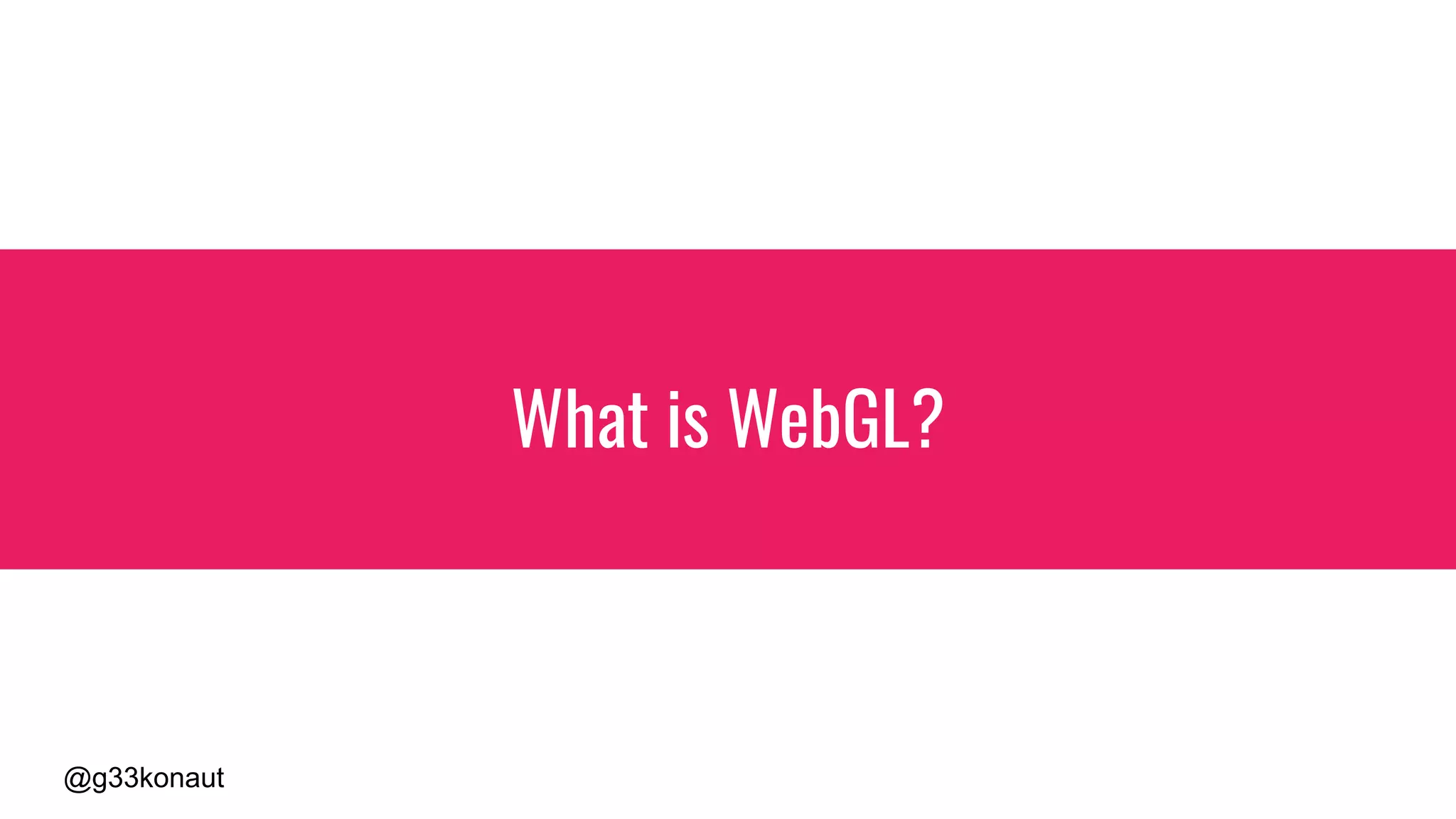
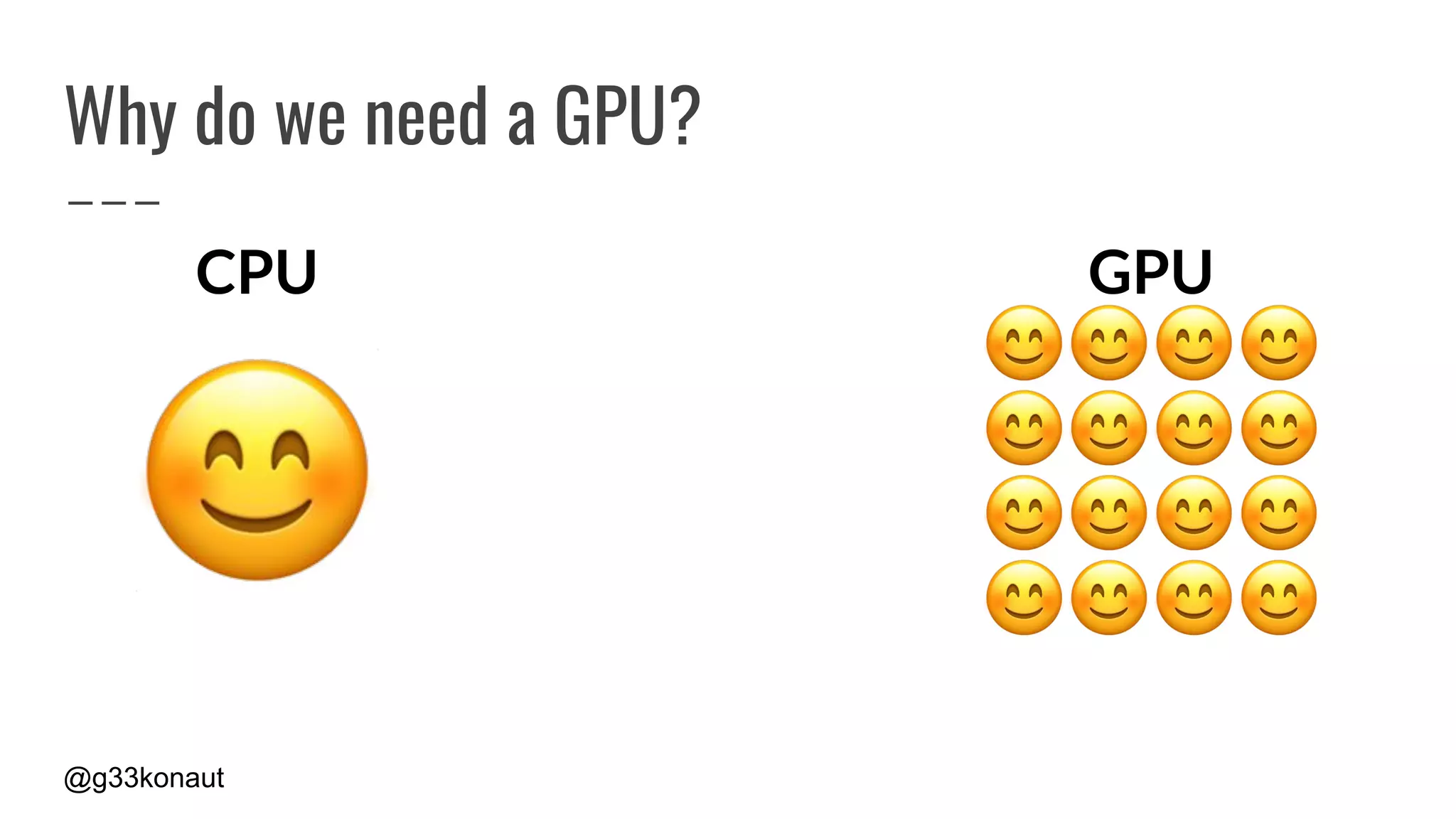
![@g33konaut
Why do we need a GPU?
CPU GPU
for(var i=0; i<10; i++) {
if(data[i] == MAGIC_VALUE) {
data[i+offset] = data[i] / data[i+1]
}
}](https://image.slidesharecdn.com/creativeexperiments-221111123604-dac3de74/75/Graphical-fun-With-WebGL-shaders-Martin-Splitt-7-2048.jpg)
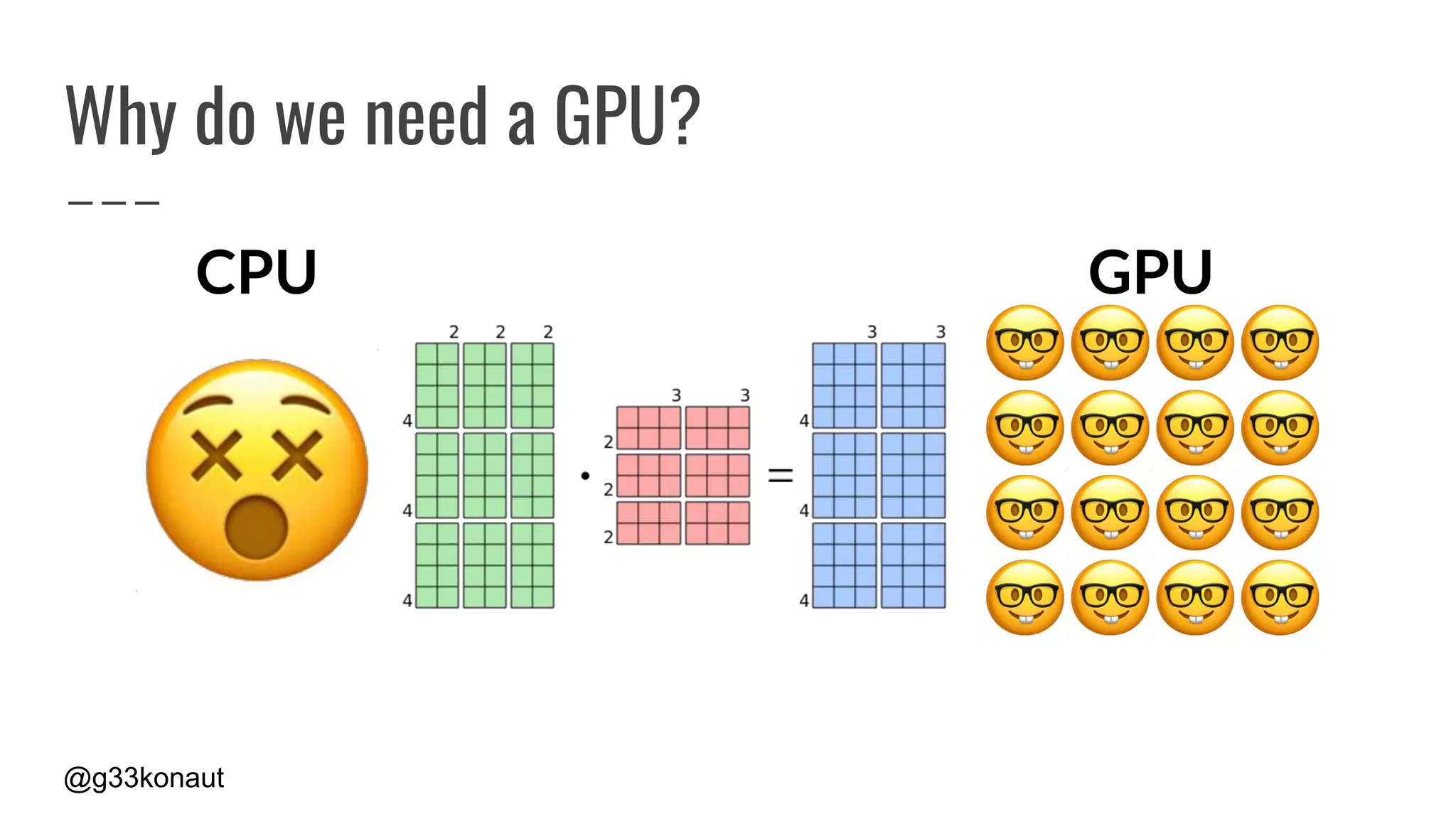
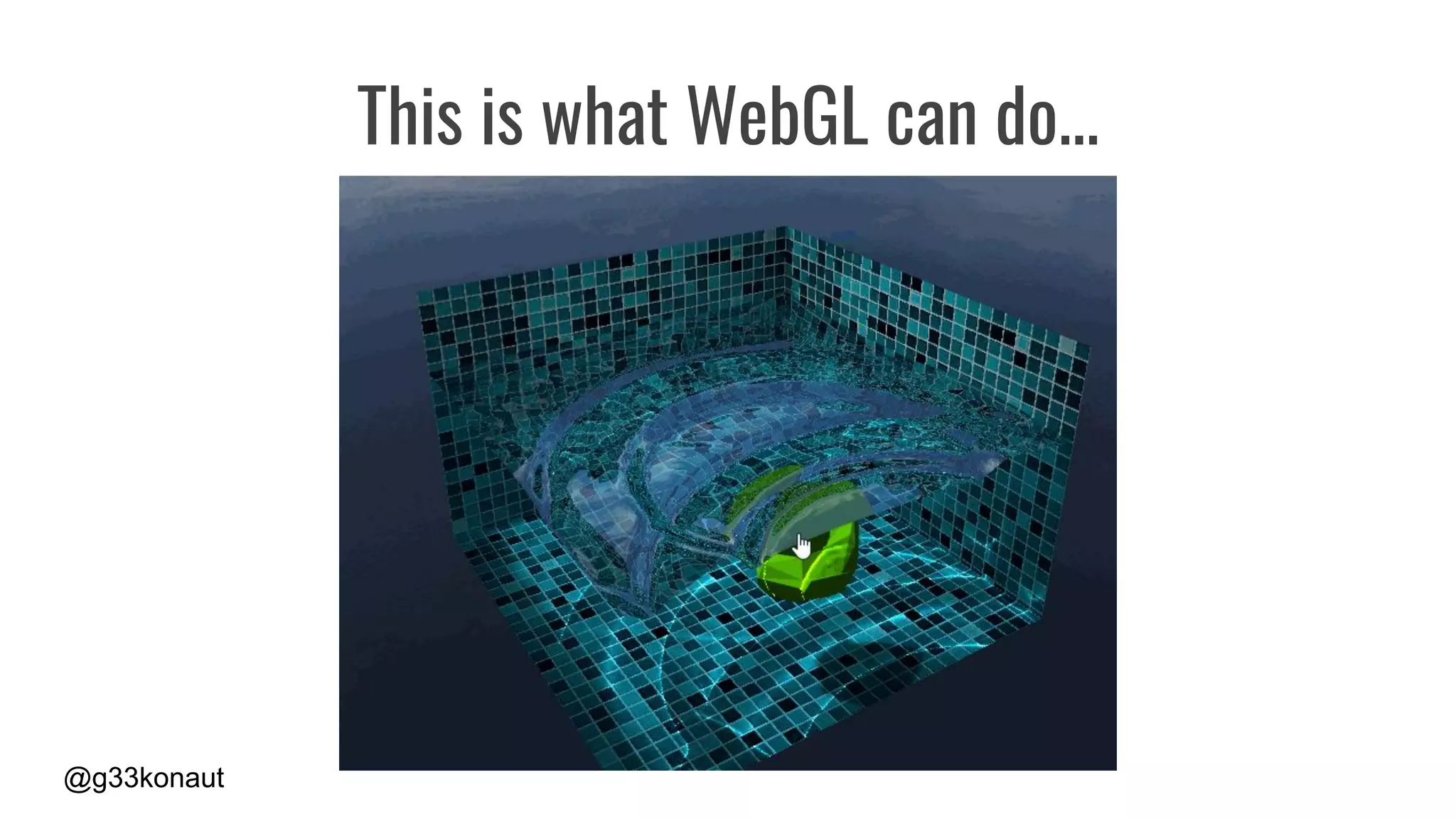
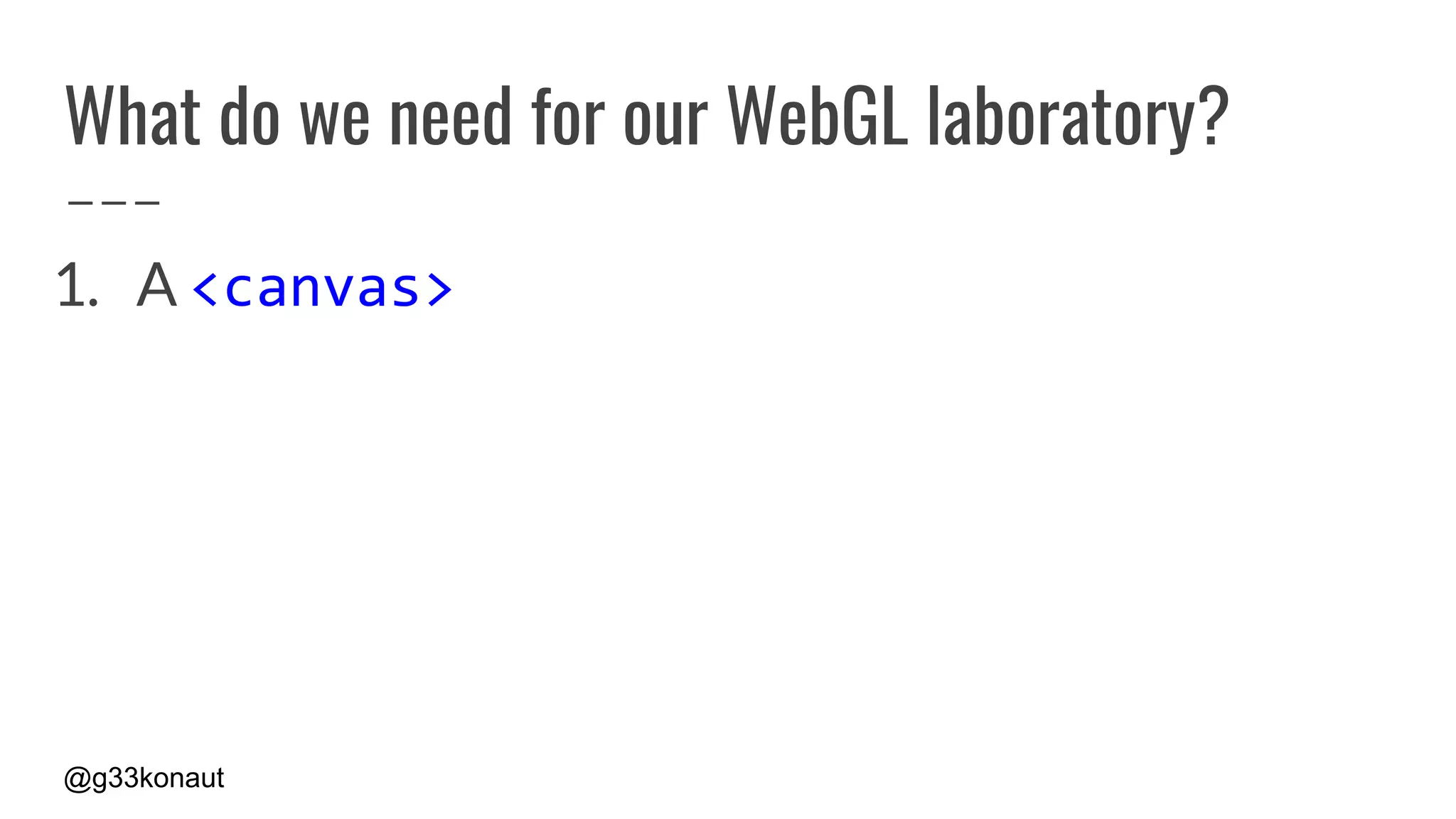
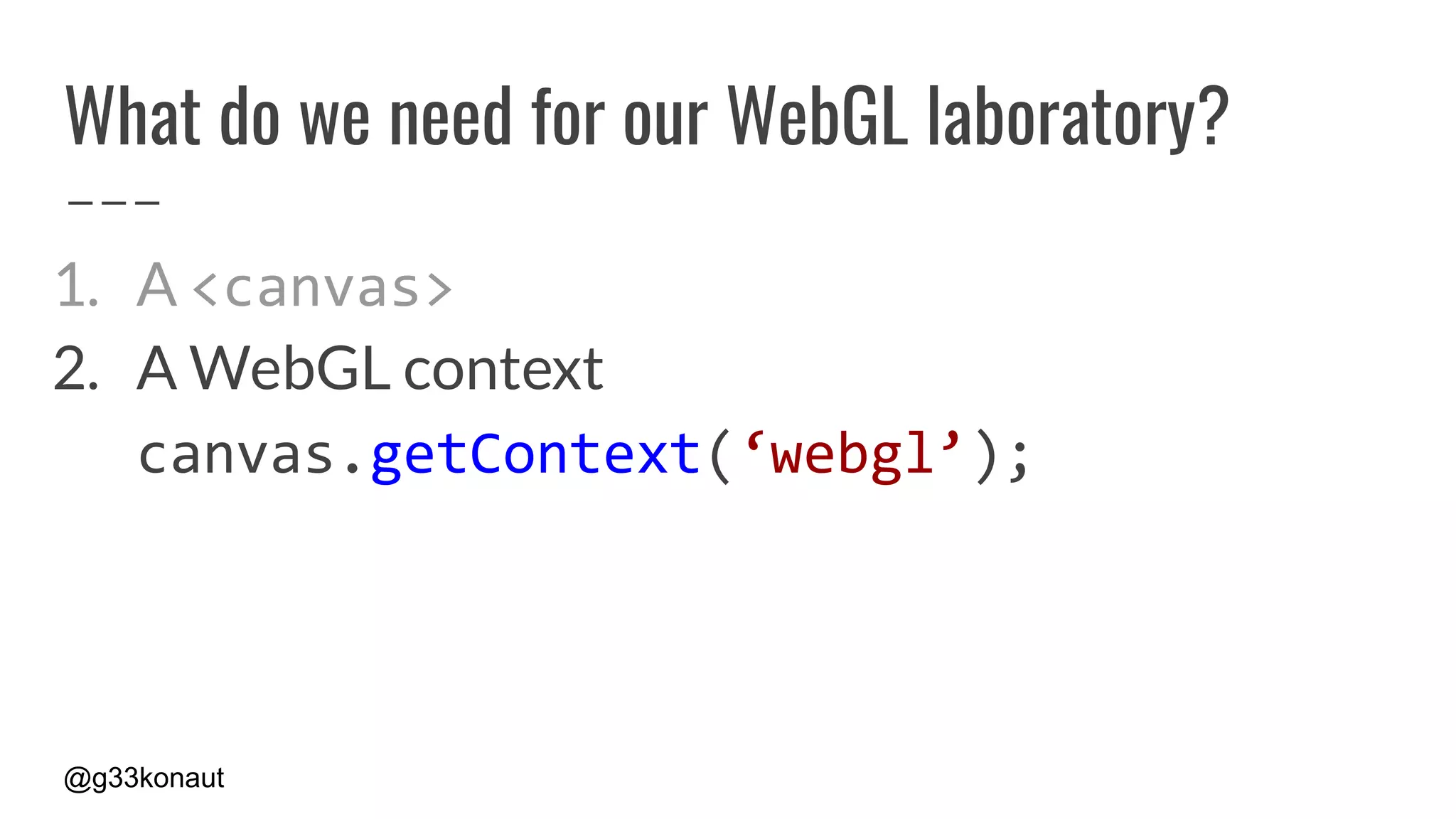
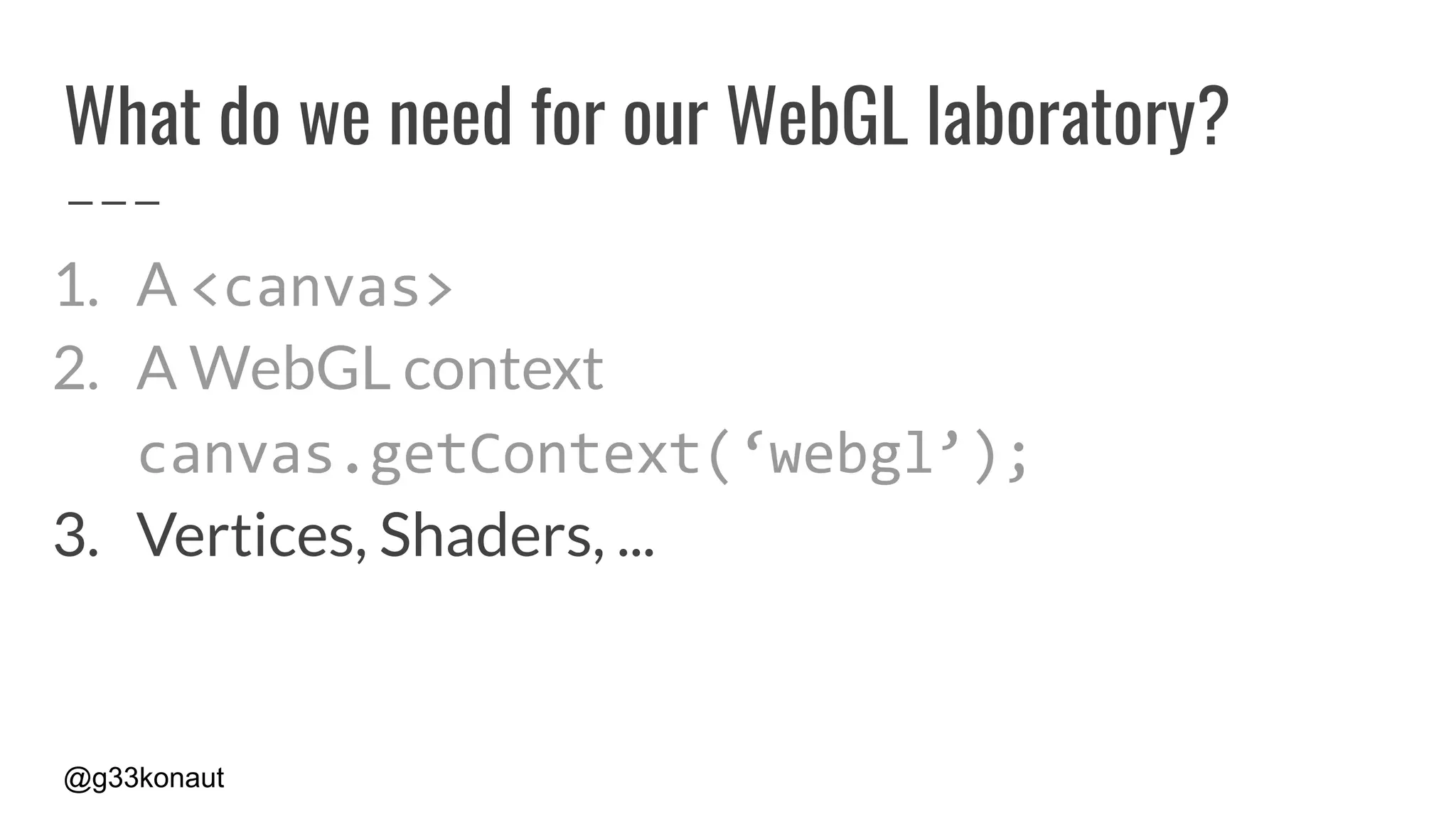
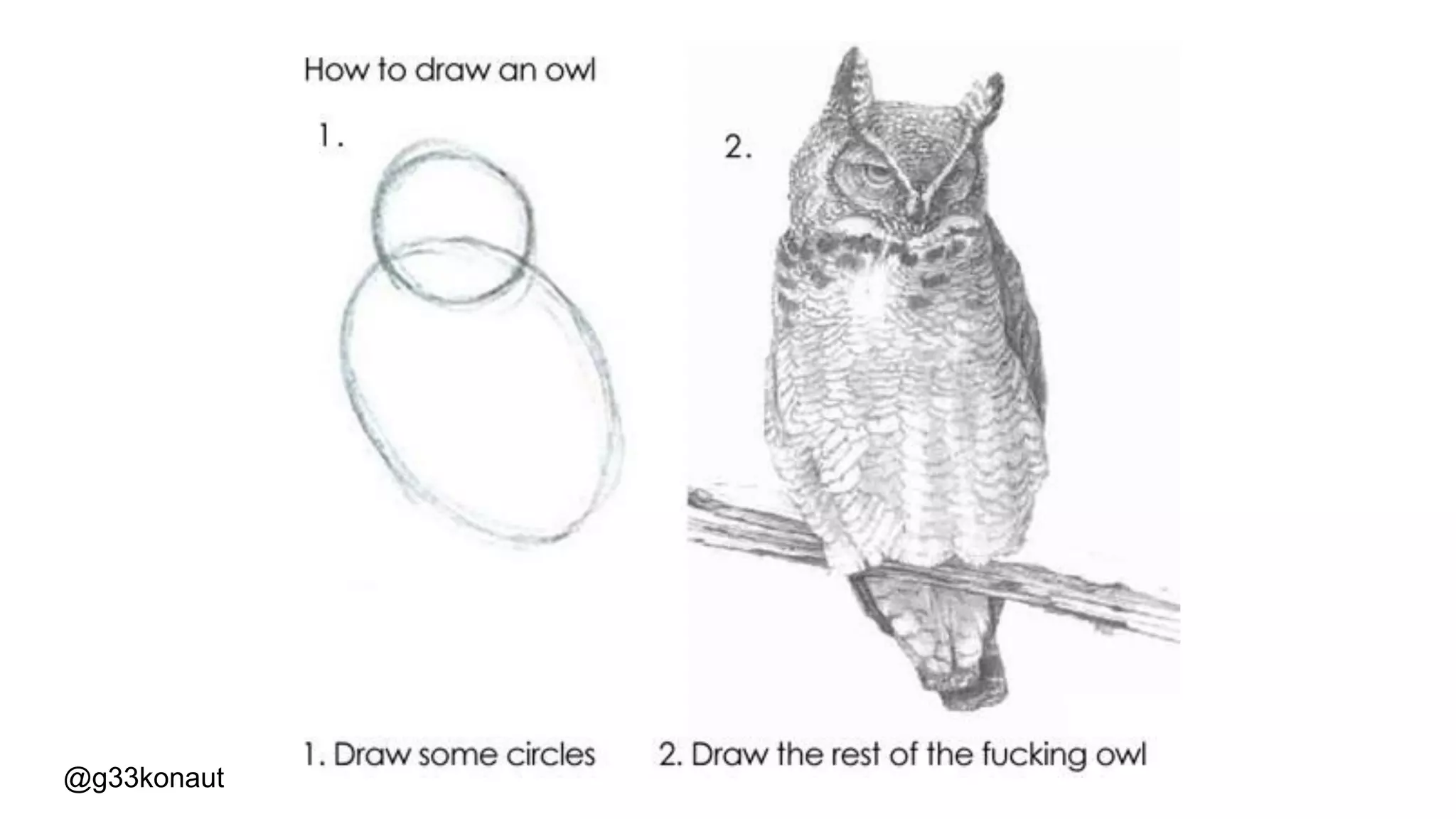
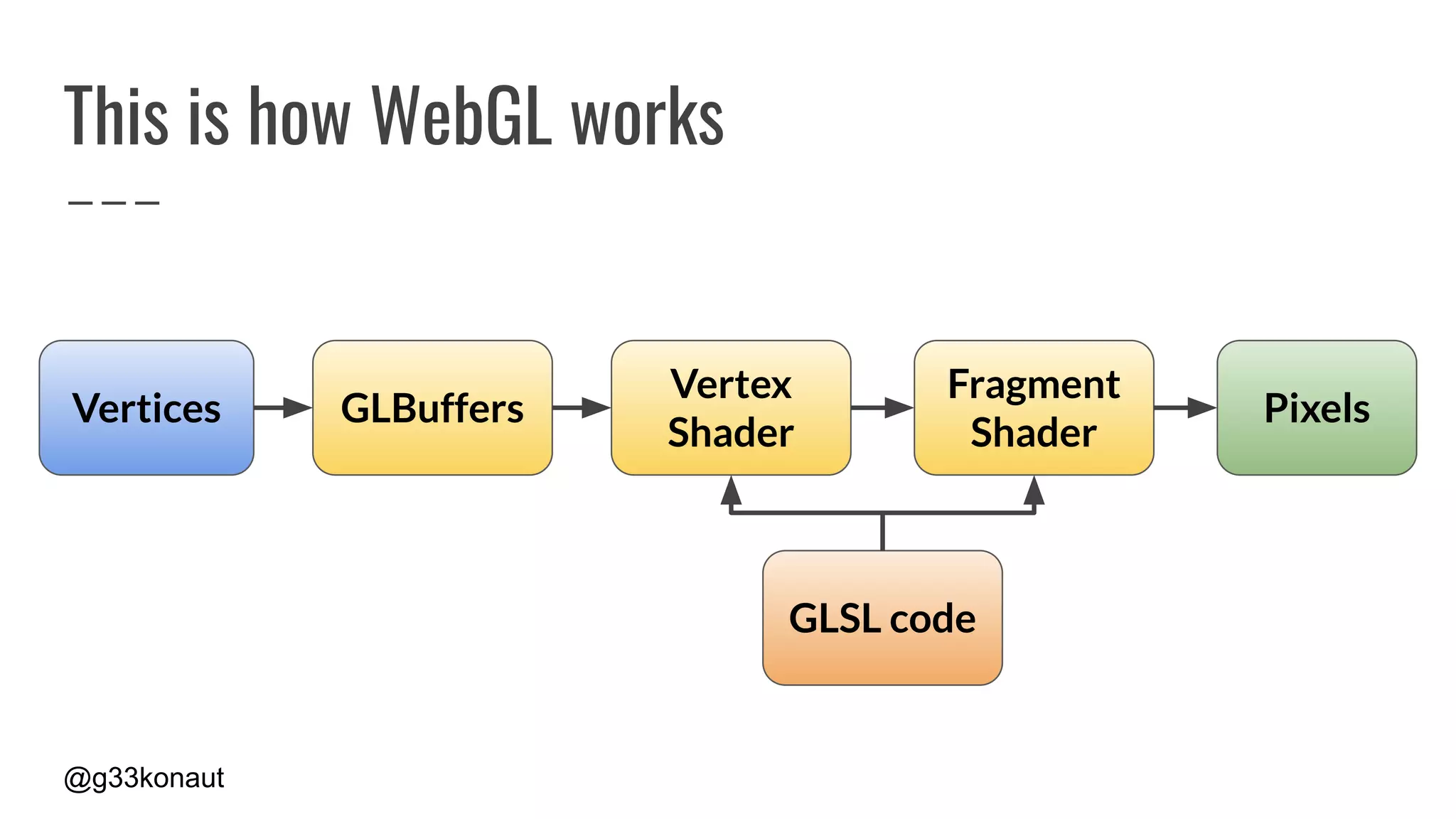
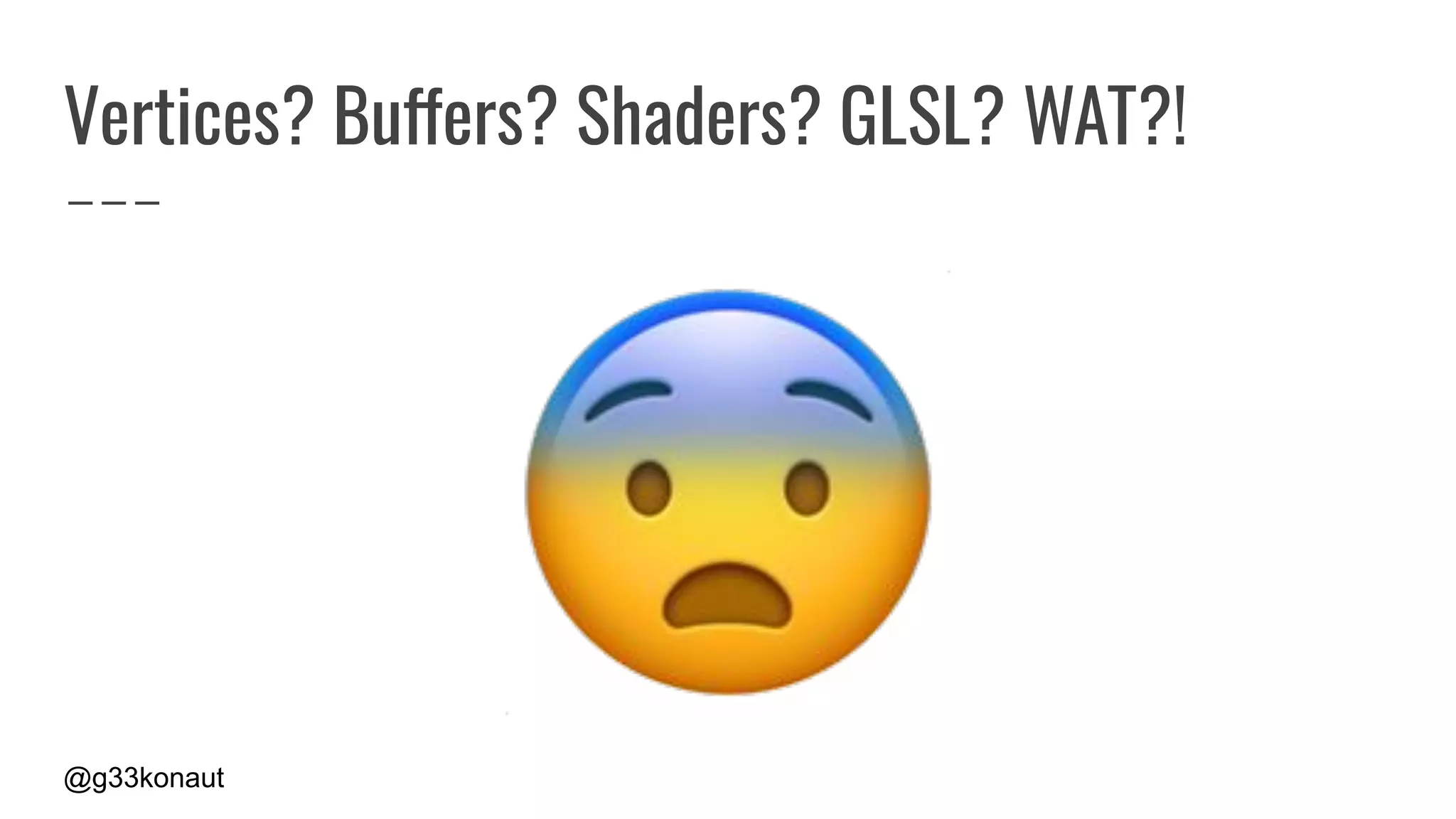

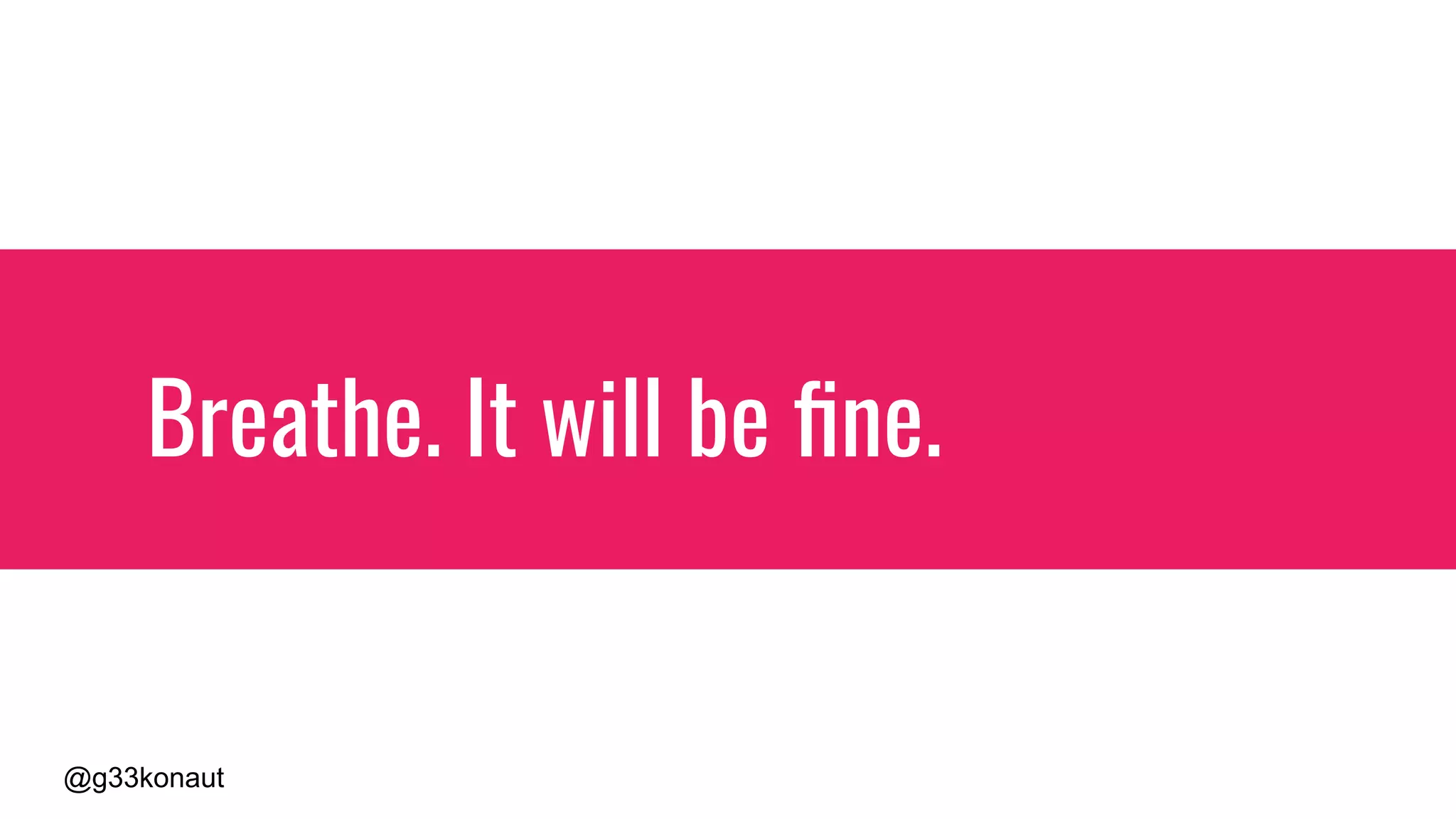
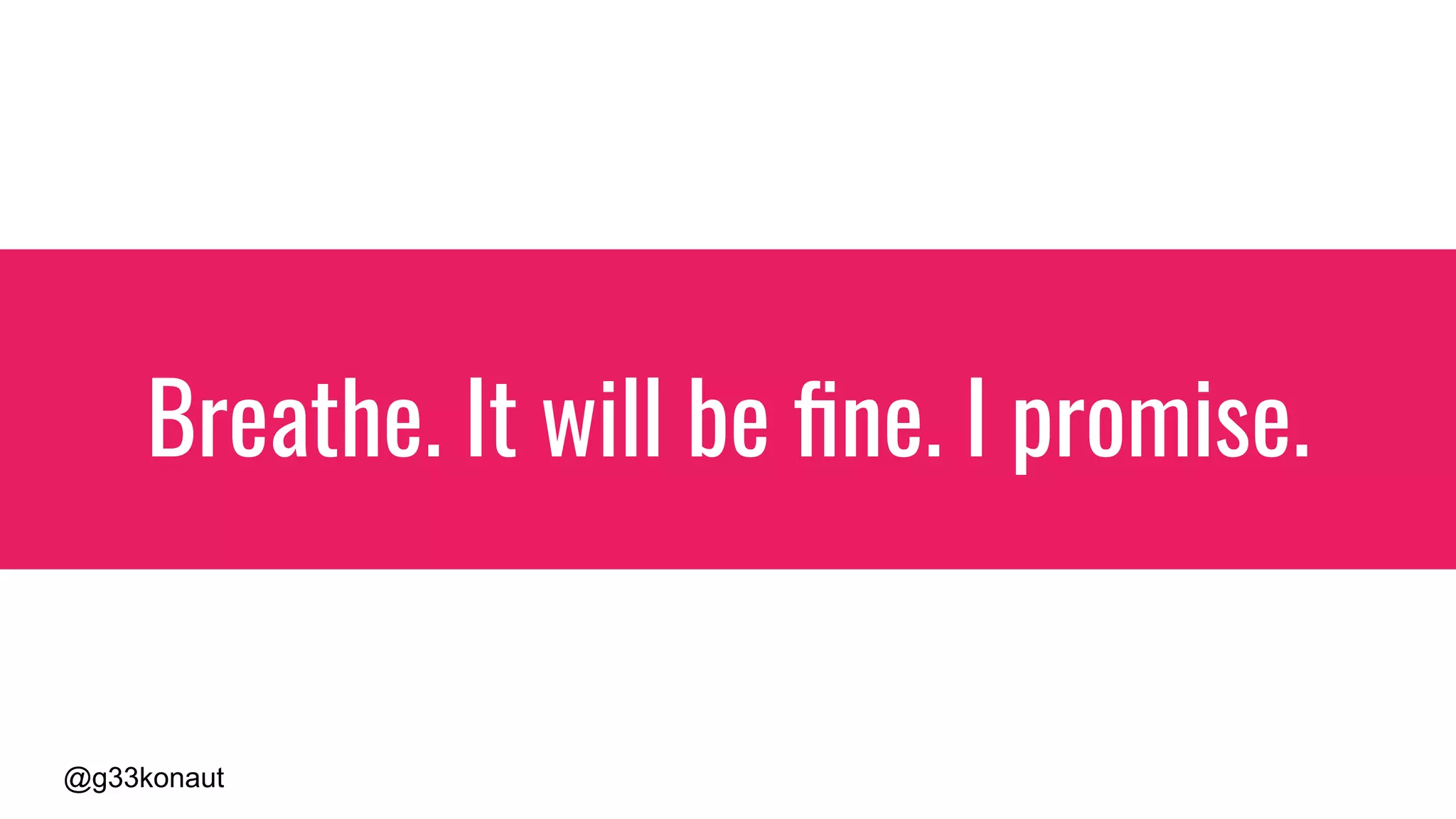
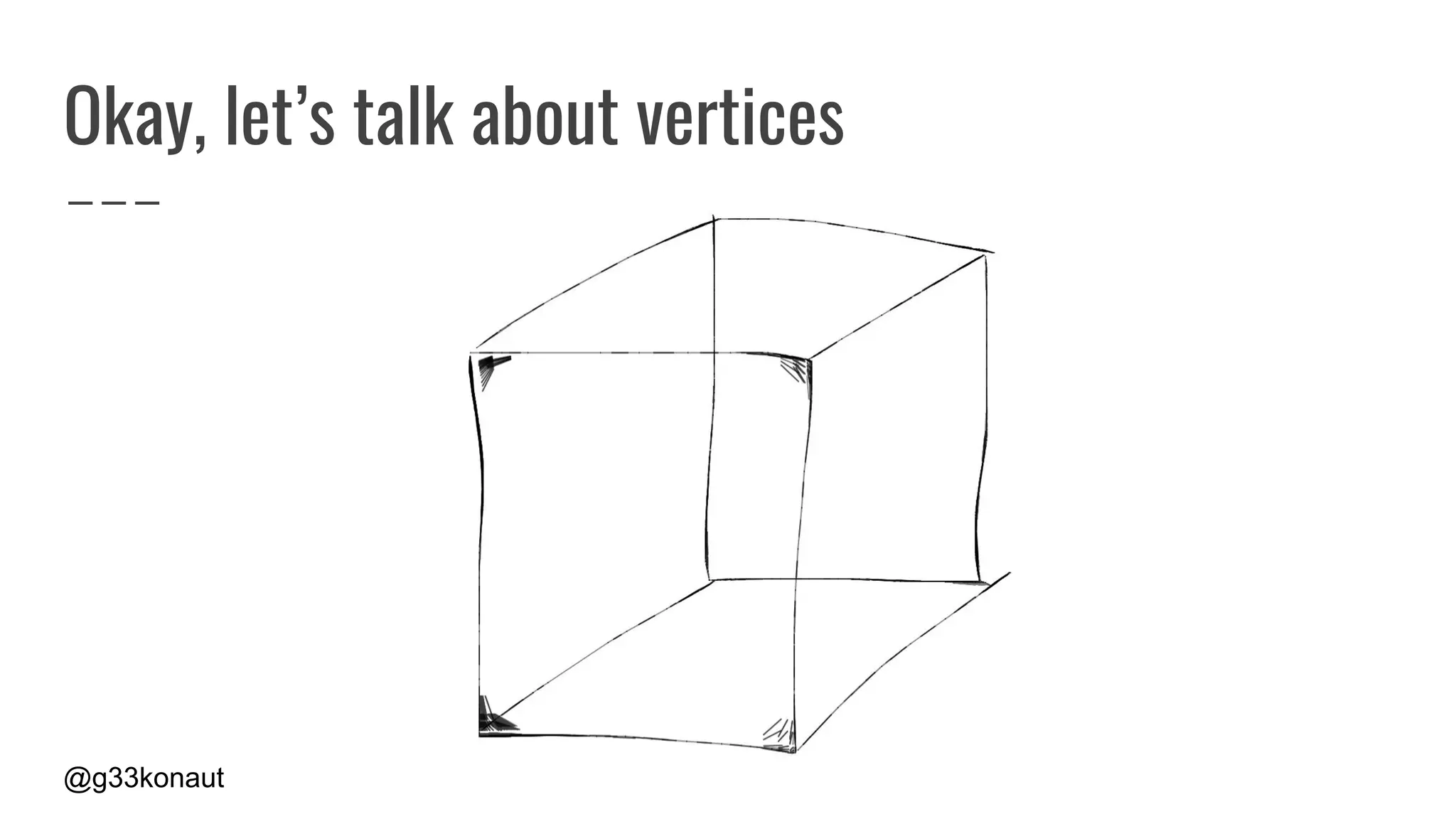
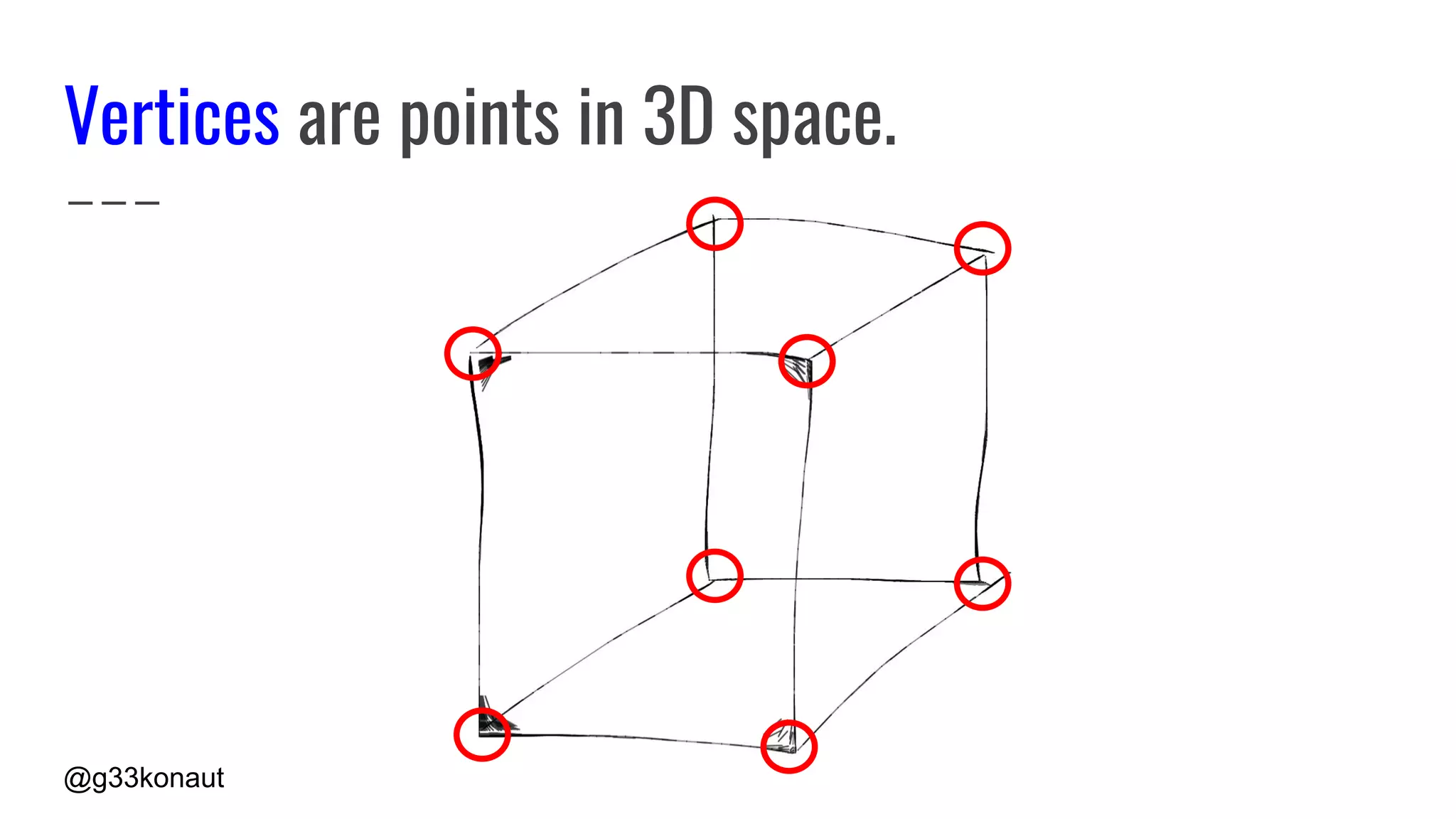
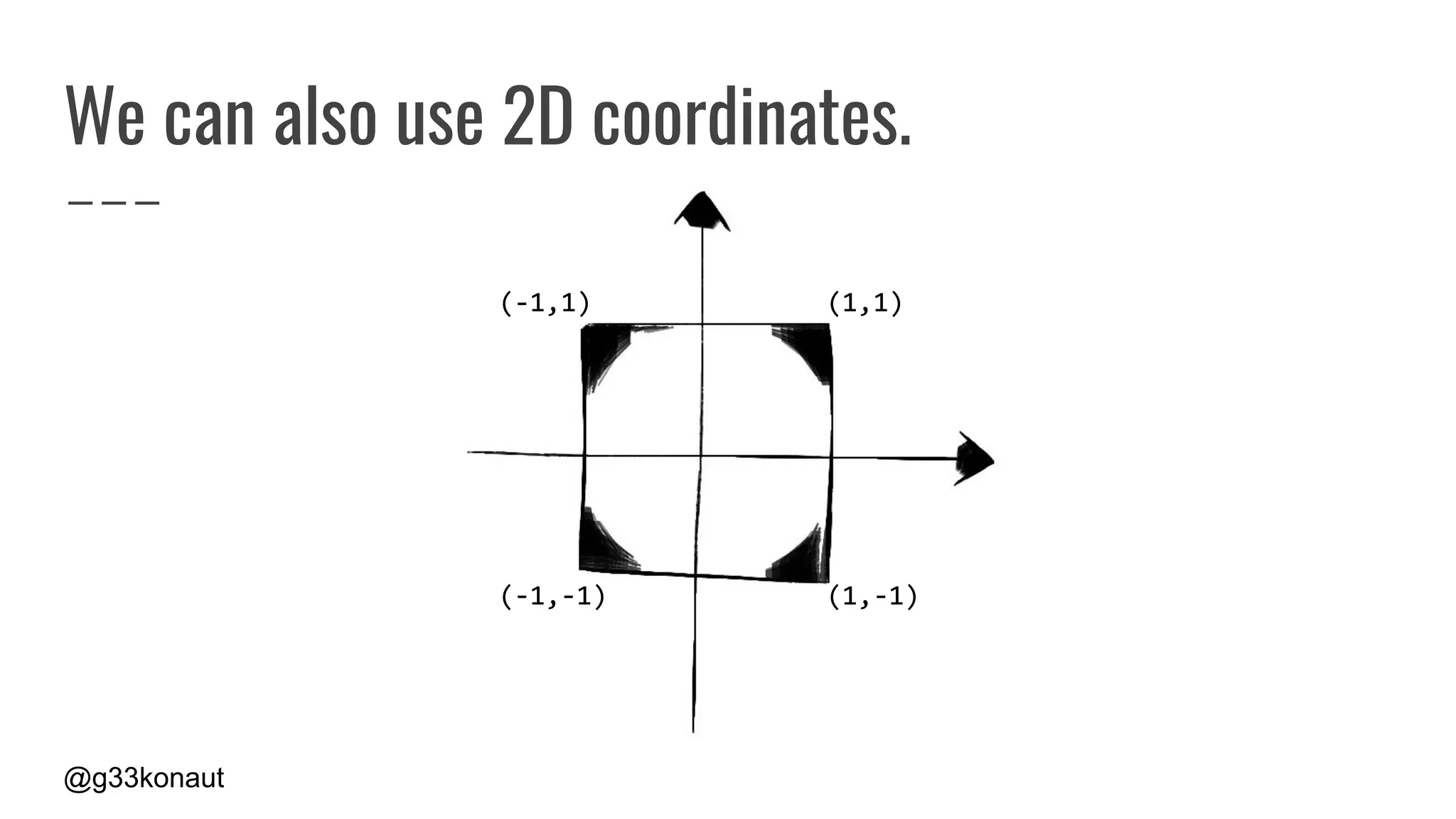
![@g33konaut
(1,1)
(-1,1)
(-1,-1) (1,-1)
We put them into a TypedArray
const vertices = new Float32Array([
-1.0, 1.0,
1.0, 1.0,
1.0, -1.0,
-1.0, -1.0
]);](https://image.slidesharecdn.com/creativeexperiments-221111123604-dac3de74/75/Graphical-fun-With-WebGL-shaders-Martin-Splitt-22-2048.jpg)
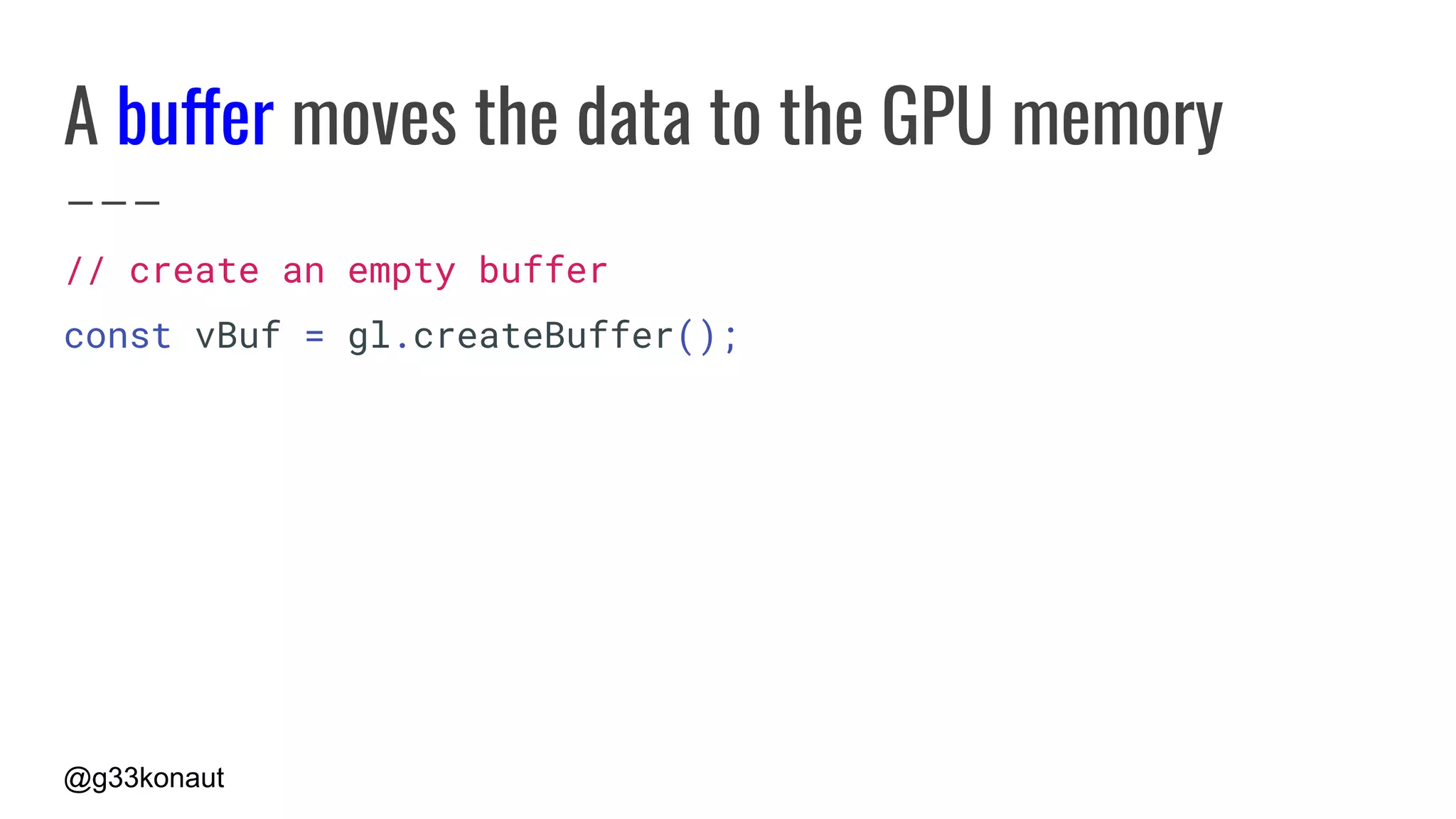
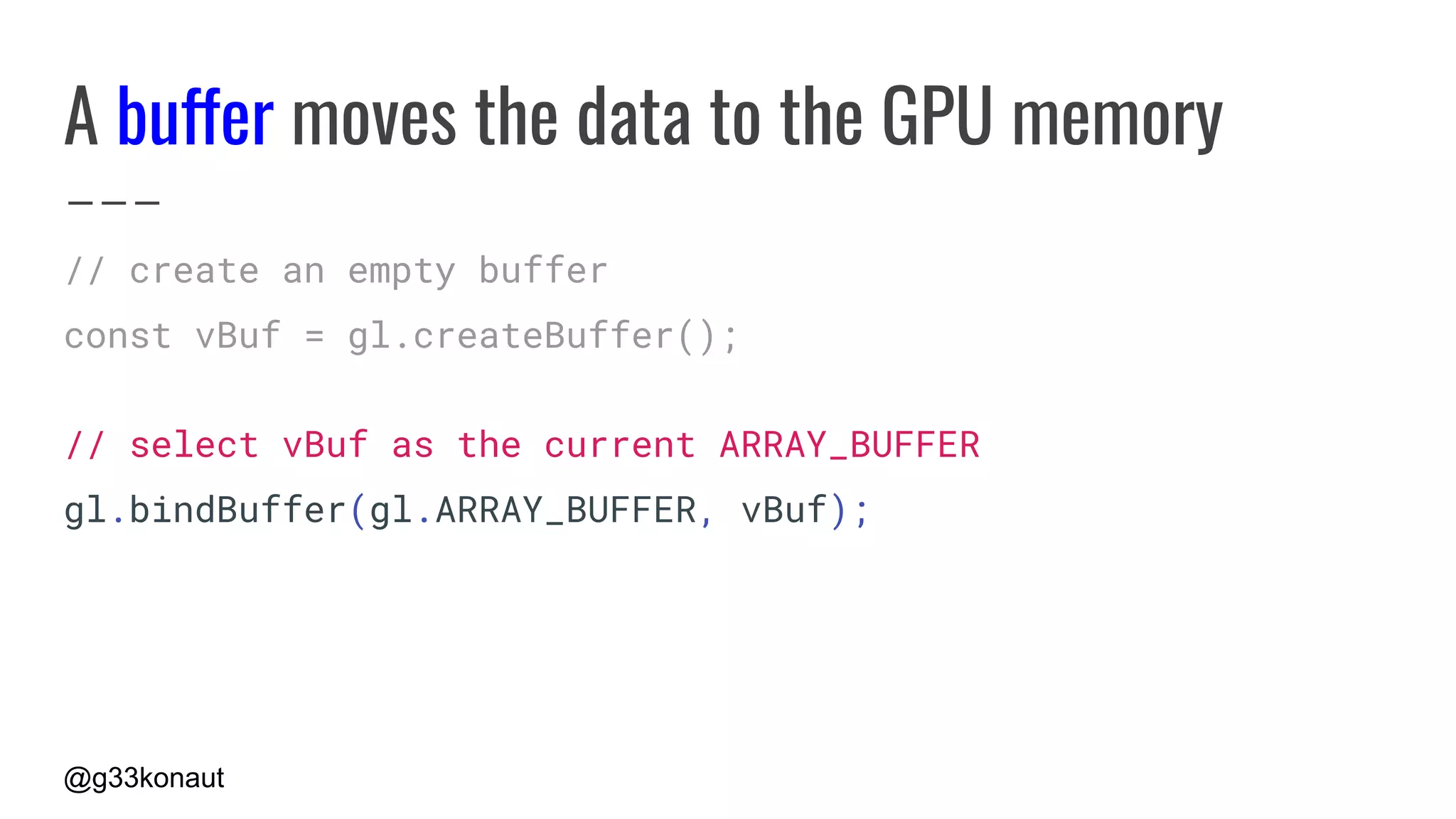
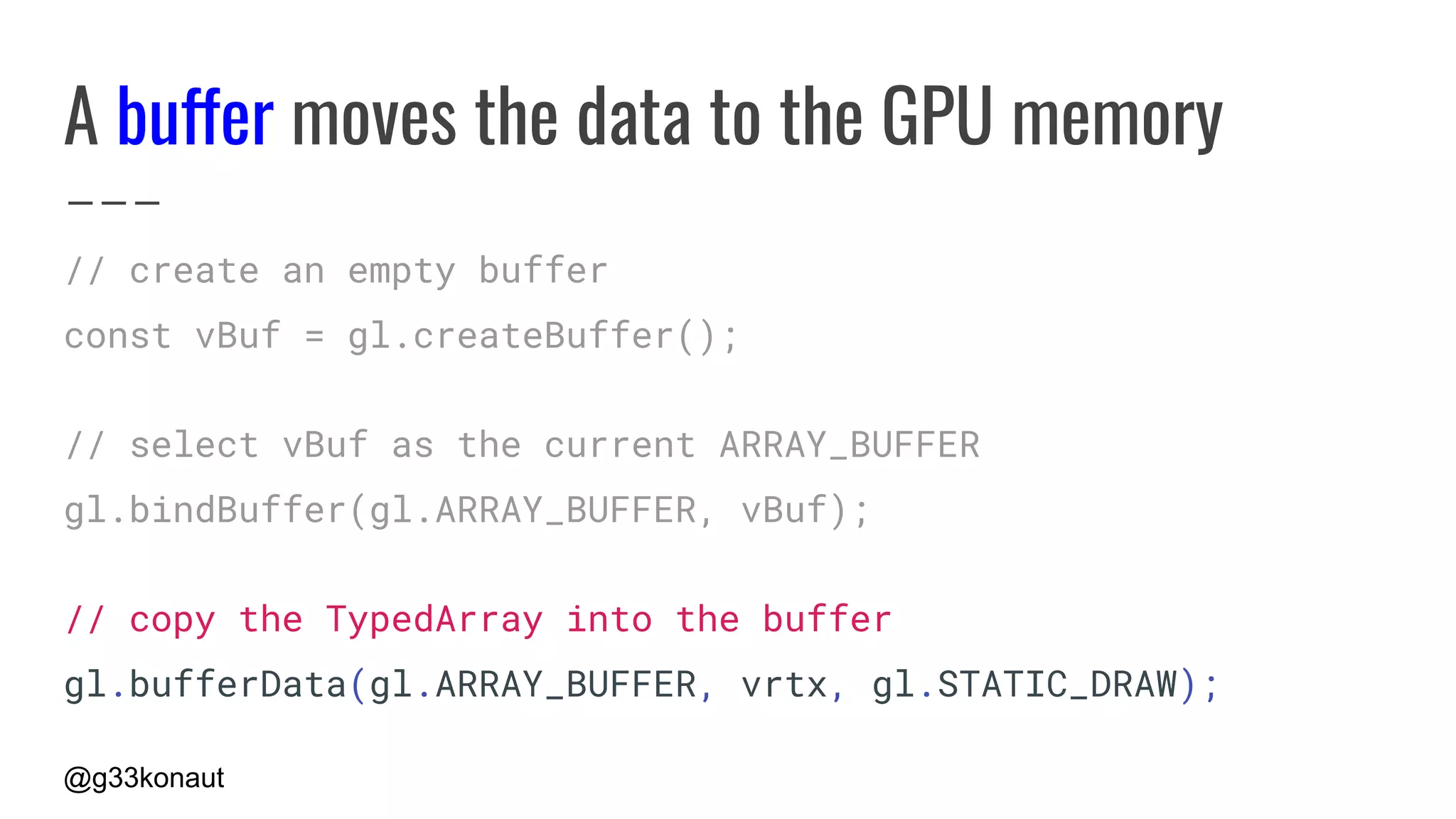

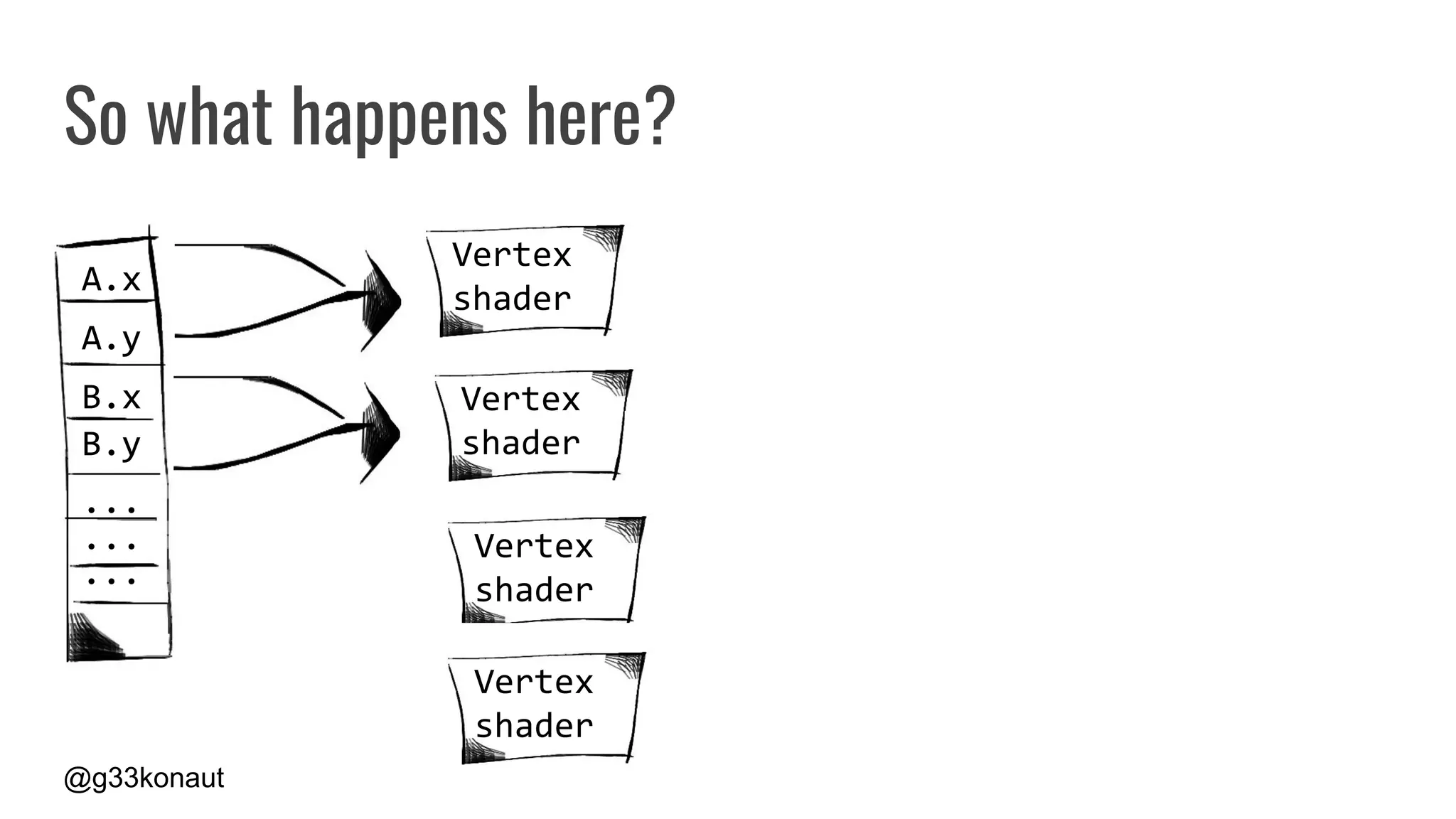
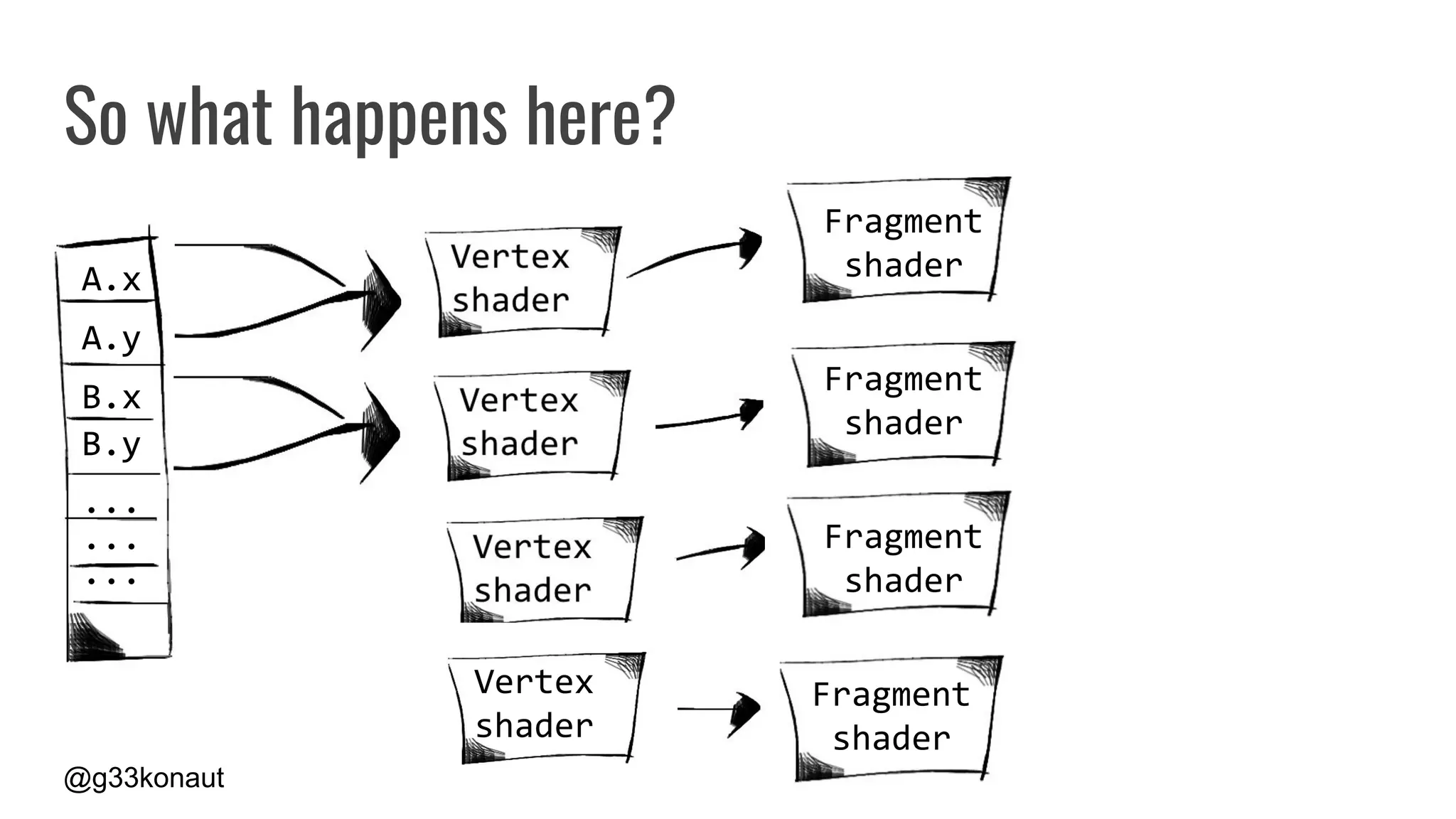
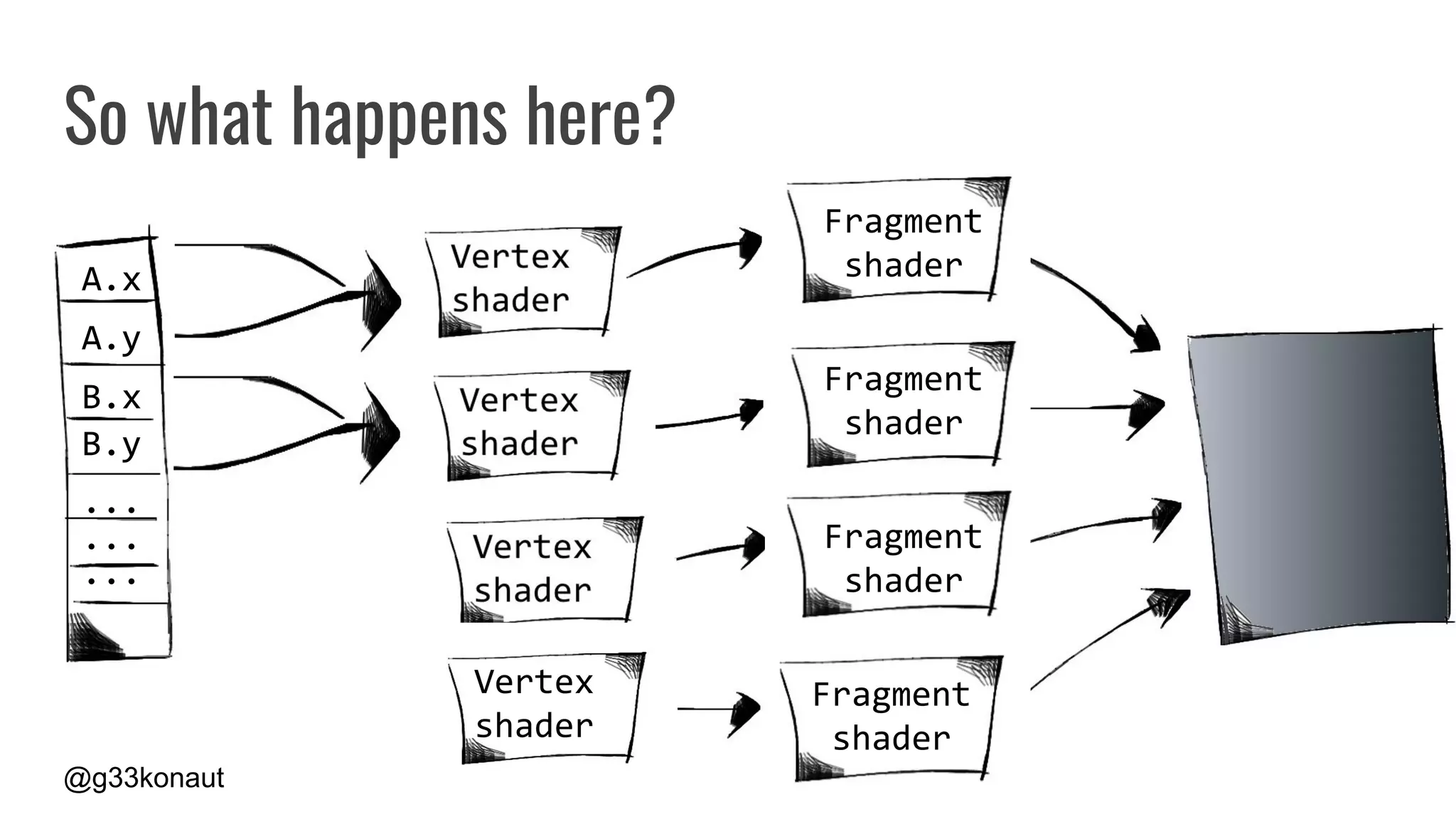

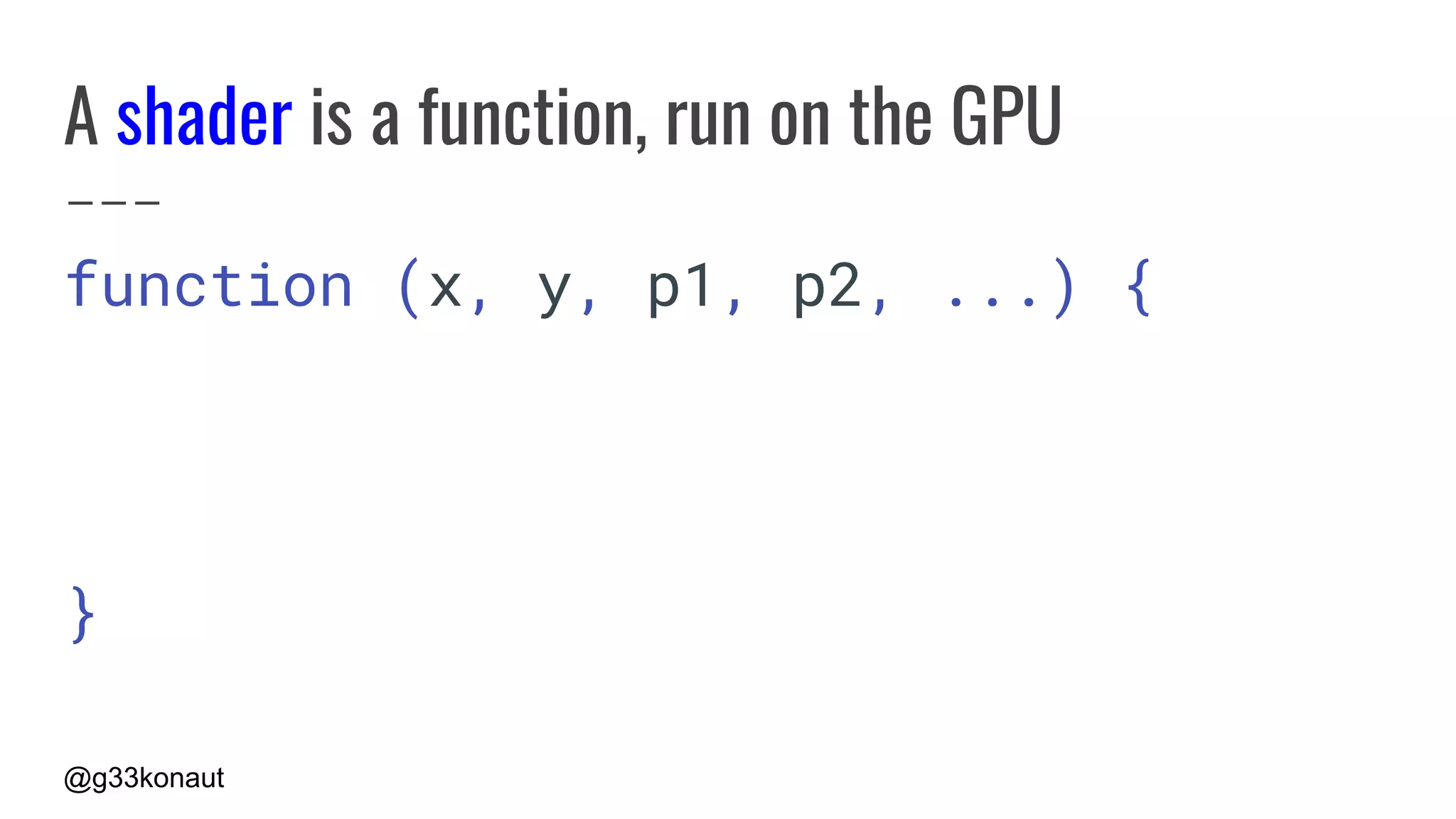
![@g33konaut
A vertex shader returns coordinates to draw at
function (x, y, p1, p2, ...) {
// do stuff
return [x, y];
}](https://image.slidesharecdn.com/creativeexperiments-221111123604-dac3de74/75/Graphical-fun-With-WebGL-shaders-Martin-Splitt-32-2048.jpg)
![@g33konaut
A fragment shader returns the colour to draw
function (x, y, p1, p2, ...) {
// do stuff
return [red, green, blue, alpha];
}](https://image.slidesharecdn.com/creativeexperiments-221111123604-dac3de74/75/Graphical-fun-With-WebGL-shaders-Martin-Splitt-33-2048.jpg)
